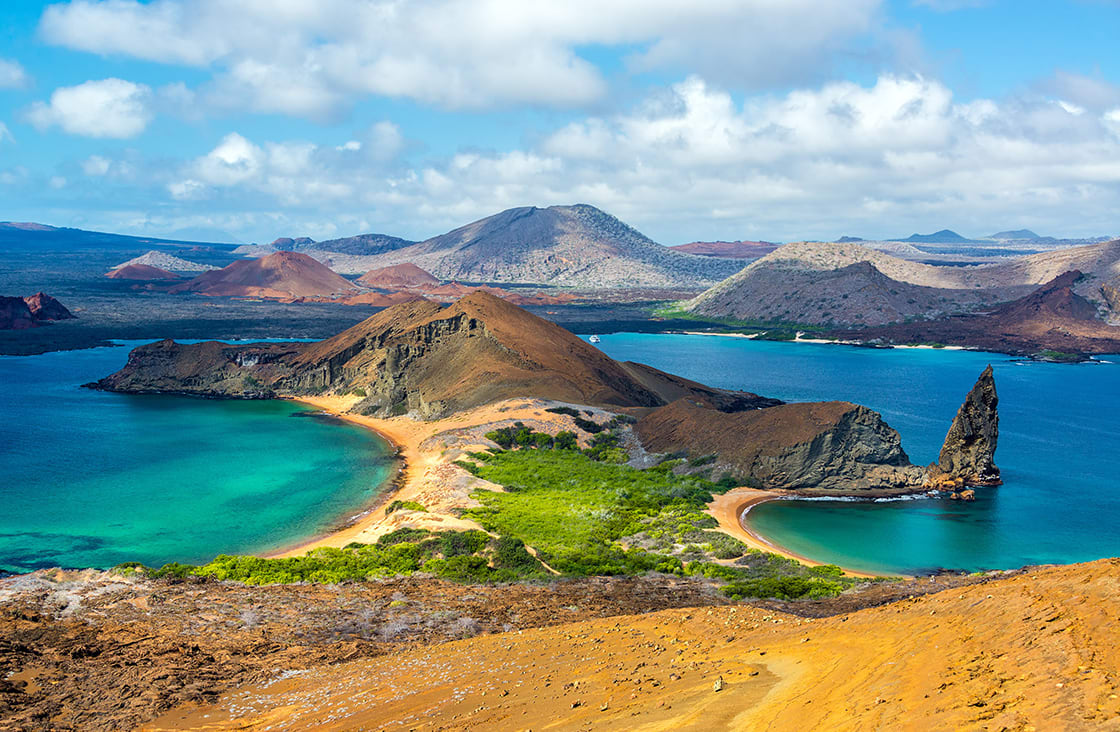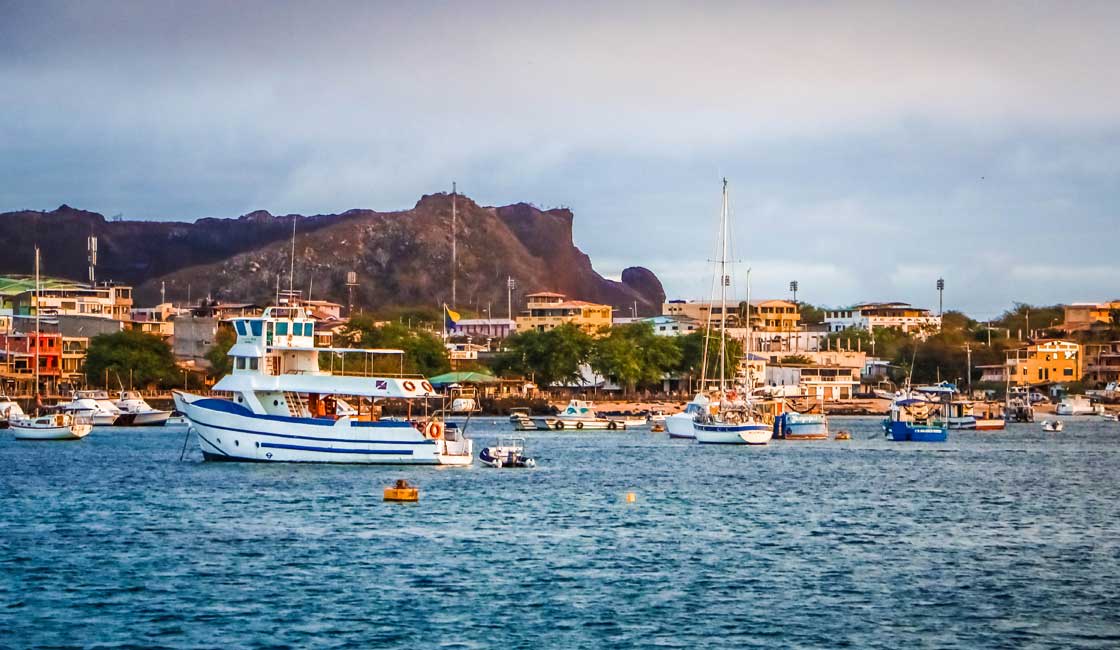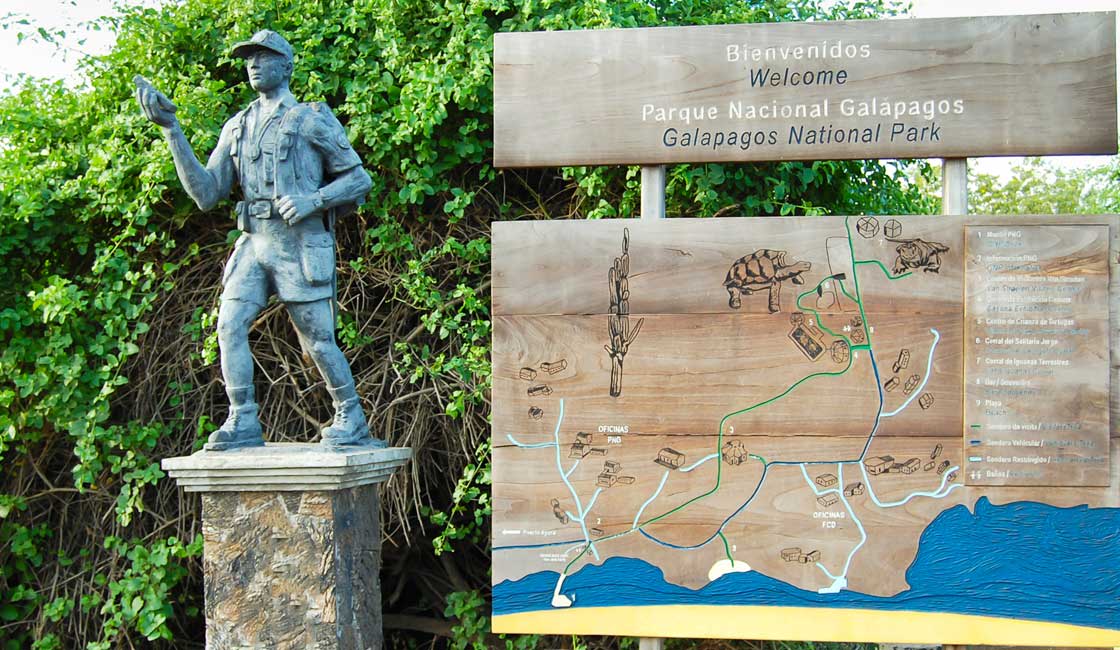
As one of the most remote island chains in the world, there can be some confusion over what country the Galapagos Islands belong to. This post will briefly recap the history of the islands and how they were first discovered, before discussing their evolution under the ownership of Ecuador.
The first known discovery of the Galapagos was made in 1535 by Tomas de Berlanga, a Spanish bishop who happened upon the islands by chance during a difficult sailing voyage between Panama and Peru. The bishop was quick to label the islands as barren and inhospitable, being unsuited to crop cultivation and posing particular problems in terms of freshwater supply. In fact, one of the only available sources of food seemed to be the numerous giant tortoises that lived there. The name “Galapagos” actually comes from the Spanish word for the tortoise in honor of the populations that were described by numerous early visitors to the islands.
During this time the Galapagos were owned by the Spanish Empire. However, due to the relative harshness of the environment coupled with their isolation, they were largely neglected by Spain, as well as remaining overlooked by any other major interest as well.

San Cristobal
Ecuador annexed the islands in 1832, shortly after its independence and three years before Darwin’s famous Beagle voyage. The country is the closest landmass to the islands, though still lies over 600 miles to the east. At first, Ecuador named the island chain the “Archipelago of Ecuador”, which then changed to “Archipelago de Colon” in 1892 as a tribute to Christopher Columbus and his discovery of the Americas. Whilst this remains their official name, the islands are still more commonly referred to using the original Spanish word used to describe them, Galapagos. New Spanish names were also given to the individual islands, replacing (or simply adding confusion to) the existing names of the English pirates. Some of these new names reflected Ecuadorian patriotism, such as Floreana island, named after Ecuador’s General Flores.
Over the next century, several attempts at establishing the first formal colonies were made, though most of these were unsuccessful or abandoned after a number of years. Attempts at settlement were thwarted by a variety of factors including Ecuador’s decision to establish penal colonies on some of the islands.
The presence of other countries also started to be felt in the Galapagos. During World War II, the Galapagos emerged as a strategic landmark in America’s defense against the Japanese empire. The U.S. was granted permission to establish a small naval base on the island of Baltra to patrol the Pacific and help defend the Panama Canal. Control of Baltra was returned to Ecuador after the war and the island’s air strip was turned into a civilian airport to receive visitors from the mainland.
Throughout the twentieth century, interest in the islands gradually increased which spurred immigration and tourism from North America, Europe and Ecuador. Human settlements expanded over the decades, with many immigrant families working to support the growing ecotourism industry.
During this time it became increasingly clear that the Galapagos consisted of a remarkably unique and valuable ecosystem, but also one that had been subject to significant exploitation. In particular, the islands had attracted numerous poachers over the centuries looking to exploit the fauna of the islands. This included sperm whales (for their oil), seals (prized for their luxurious fur), as well as the famous tortoises whose meat was used to sustain sailors during long ocean voyages. The introduction of non-native species also posed a significant threat to the fragile Galapagos environment.
In response to this, and in order to manage the increasing demands of immigration and tourism, Ecuador declared the islands a national park in 1959. The park covers 97.5% of the archipelago’s land area, exempting only those areas already given over to human settlements. Shortly after, in 1964, the Charles Darwin Research Station was opened on Santa Cruz to conduct scientific research and inspire conservation efforts across the islands. In particular, and still to this day, the Station worked hard to reverse the decline of tortoise and land iguana populations, monitor the health of other endangered wildlife and protect against invasive species. They are also involved in working with local communities to help encourage sustainable development, as well as advising the government and park authorities on measures to promote responsible tourism.

National Park
For those thinking of heading to the Galapagos on vacation, given they are a part of Ecuador, the islands can only be accessed via the Ecuadorian cities of Guayaquil or the capital Quito. There are two airlines serving the Galapagos – Avianca and LATAM – all operating two flights daily to Baltra island and least one other daily flight to the airport on San Cristobal.
While Rainforest Cruises aim to provide accurate and up-to-date information, we make no representations as to the accuracy or completeness of any information herein or found by following any link on this site. Rainforest Cruises cannot and will not accept responsibility for any omissions or inaccuracies, or for any consequences arising therefrom, including any losses, injuries, or damages resulting from the display or use of this information.




